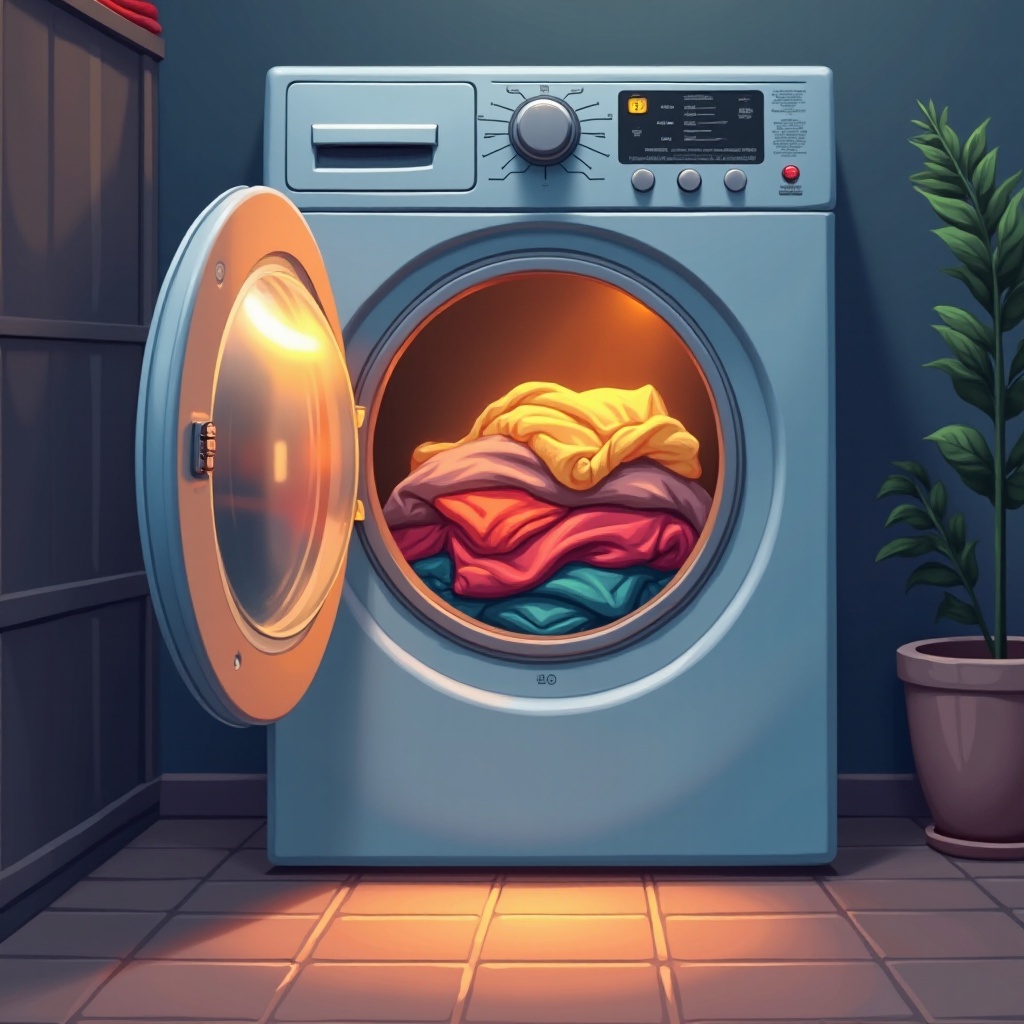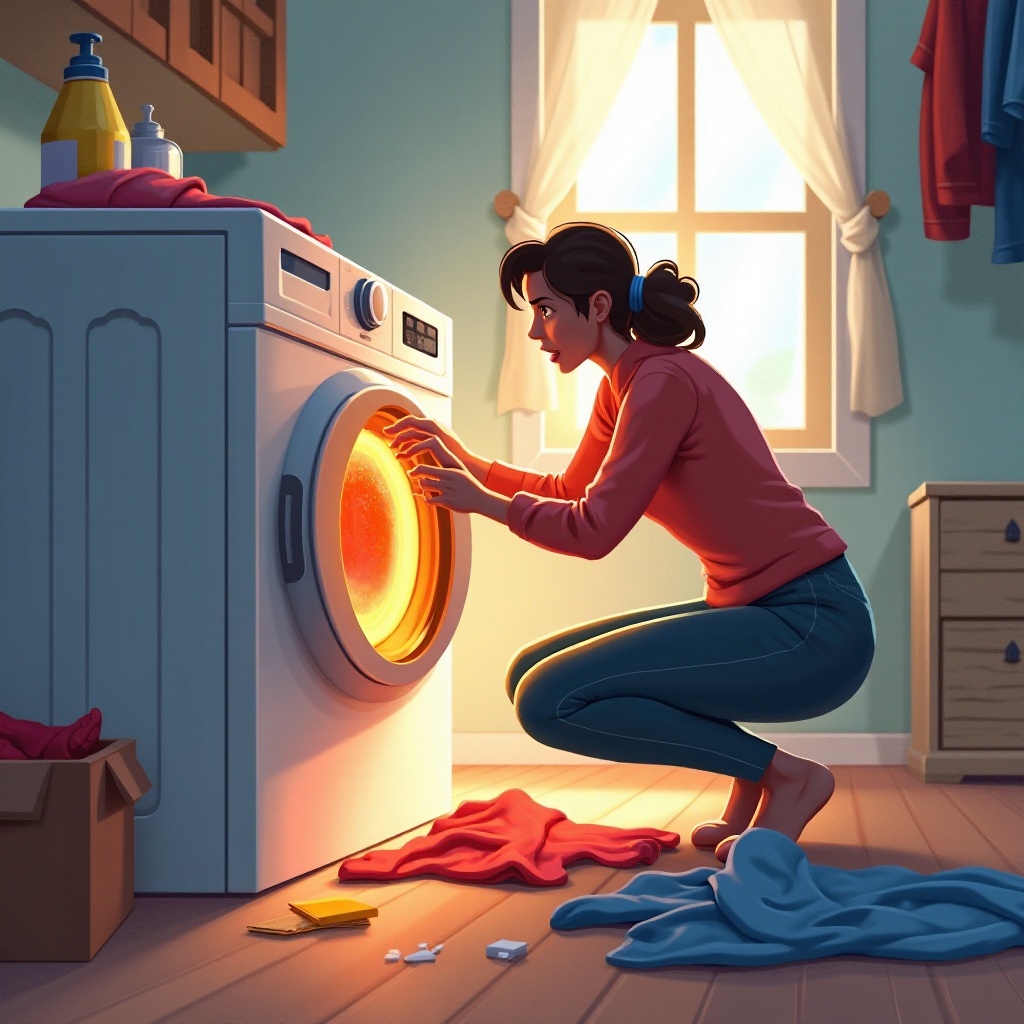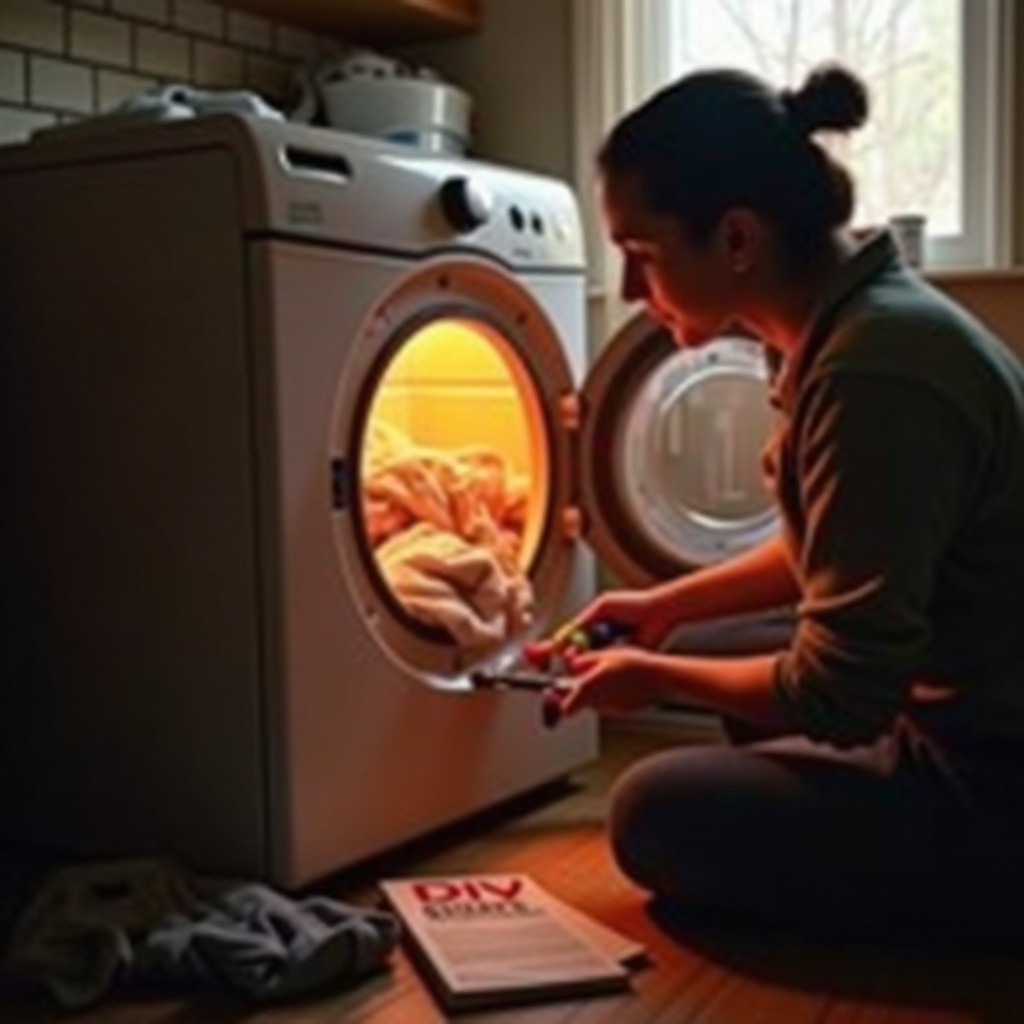Introduction
Having a dryer that's operational and efficient is vital to household convenience, saving you both time and energy. It can be particularly aggravating when your dryer runs hot, yet clothes emerge damp. Addressing this issue is critical, not just for convenience but also to safeguard against potential appliance damage and higher energy bills. Here, you'll discover common causes, useful troubleshooting methods, and effective solutions for restoring your dryer's performance.

How a Dryer Works and Where Problems Arise
To fix your dryer issue, understanding its basic operation is essential. A dryer uses a blend of heat, air circulation, and spinning to dry your garments effectively.
The Dryer Heat Mechanism
The core of a dryer's operation is its heating element. This component heats the air, which then circulates through a fan throughout the dryer drum. It is this heated air that evaporates the moisture from your clothes, which is subsequently expelled via the venting system.
Common Points of Failure
Though straightforward in design, several dryer components can fail, leading to inefficiencies. Common issues arise from blocked airways, heating element failures, and excess loads. Recognizing these problems is the first step toward diagnosing your dryer's performance woes effectively.
Diagnosing the Problem
Effectively solving your dryer's inefficiency demands a thorough diagnosis. Your appliance's failure to dry clothes thoroughly when hot might be attributed to multiple factors.
Checking the Lint Filter and Exhaust Vent
Your first step is to check readily accessible parts. A lint filter packed with lint inhibits airflow, which can cause overheating and inhibit moisture expulsion. Additionally, a blocked exhaust vent traps humid air inside the dryer, hindering drying efficiency. Regular cleaning of the filter and vent will enhance airflow.
Evaluating the Airflow
Airflow is vital in a dryer’s operation. Ensure the dryer's ducts are not crimped, crushed, or blocked, as these conditions can limit air movement. Ducts should remain straight and as short as possible to optimize performance. Check and clean them regularly to eliminate blockages or damage.
Inspecting the Heating Element and Thermostat
If air pathways are clear, but problems persist, investigate the heating element with a multimeter to ensure continuity. Likewise, inspect the thermostat, which modulates the heating elements. Failure in either component can lead to overheating or uneven heat levels, both of which can affect drying efficiency.
Common Causes and Solutions
Armed with your diagnosis, let's delve into frequent issues that might cause poor drying efficiency.
Clogged Lint Filters
Lint buildup is a very common issue. Ensure you clean your lint filter after each drying cycle. If your filter is compromised or damaged, a replacement should be considered to maintain optimum airflow.
Blocked Vents and Ducts
Annual inspections and cleanings of dryer vents and ducts are recommended. Utilize a vacuum or specialized vent cleaning brush to clear any obstructions and improve airflow.
Overloaded Dryer
Packing too many clothes into the dryer at once restricts the hot air's ability to circulate effectively, thus hampering its drying efficiency. Dry smaller, more manageable loads to maintain optimal performance.
Faulty Heating Element
Should your heating element fail, replacement might be necessary. This undertaking may require disassembling parts of your dryer, so consult your dryer's manual or seek professional assistance if needed.

DIY Fixes and When to Call a Professional
Some problems are manageable with a bit of DIY effort, while others call for expert attention.
Step-by-Step Cleaning of Vents
- Turn off the dryer and disconnect from the power source.
- Remove the ductwork from the dryer and examine for clogs.
- Use a vacuum or a designated vent brush to clear lint buildup.
- Reattach everything, ensuring there are no twists or blockages.
Changing the Heating Element
This task involves disconnecting the appliance, accessing the heating element area, and testing it with a multimeter. Follow your dryer's instruction guide closely, or if the task appears daunting, consider reaching out to a professional.
Signs That Require Expert Help
Persistent issues, odd noises, or electrical concerns should prompt you to consult a professional repair service. They can provide a thorough inspection and offer long-lasting solutions.

Preventive Measures to Avoid Future Problems
Preventive maintenance can boost your dryer's longevity and enhance its efficiency.
Regular Maintenance Routines
Set up a regular cleaning schedule for lint filters and vent inspections. This will assure continuous airflow and help deter frequent blockages.
Optimizing Drying Loads
Avoid overloading your dryer. Smaller loads not only dry more effectively but also reduce the wear on your dryer, potentially extending its service life.
Conclusion
A well-maintained dryer saves time and energy. By regularly cleaning and inspecting your dryer's components, you can prevent many common drying efficiency problems. When in doubt, seeking professional advice could save time and further repairs, ensuring your dryer operates efficiently.
Frequently Asked Questions
Why does my dryer get hot but clothes remain damp?
This often results from restricted airflow due to clogged filters or vents, overloading, or faulty heating components.
How often should I clean my dryer vent?
You should clean your dryer vent at least once a year, or more frequently if drying times are longer than usual.
Can a faulty thermostat cause my dryer to not dry clothes?
Yes, a malfunctioning thermostat can prevent the dryer from reaching or maintaining the necessary heat levels needed to dry clothes efficiently.
